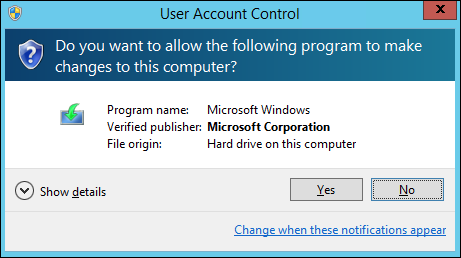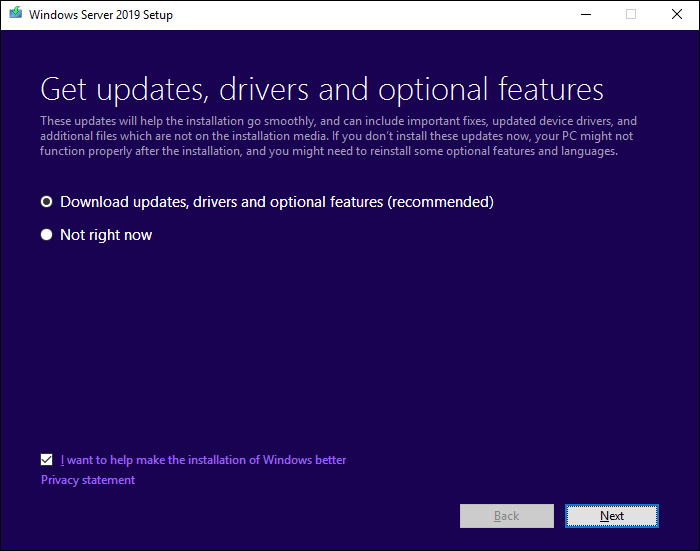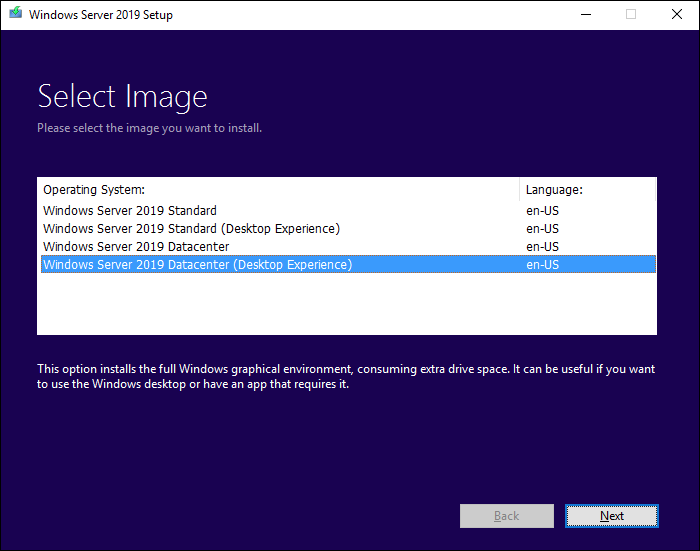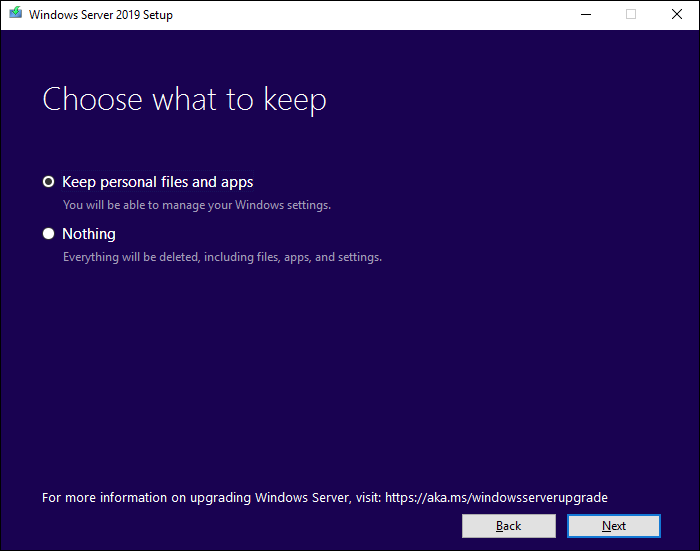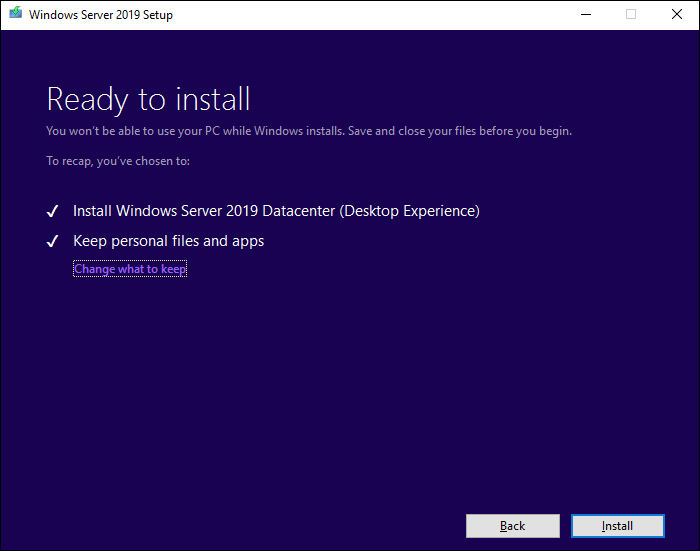- Upgrade редакций Windows Server 2012
- Версии Windows Server 2012
- Обновление версии Windows Server 2012
- Обновление Windows Server 2012 R2 до Windows Server 2019 Upgrade Windows Server 2012 R2 to Windows Server 2019
- Подготовка к обновлению на месте Before you begin your in-place upgrade
- Сбор данных To collect your info
- Выполнение обновления To perform the upgrade
- Действия по завершении обновления After your upgrade is done
- Проверка успешности обновления To make sure your upgrade was successful
- Evaluation Versions and Upgrade Options for Windows Server 2012
- Evaluation versions of Windows Server 2012
- Where to find evaluation versions
- Limits of evaluation versions
- Converting evaluation versions of Windows Server 2012 to full retail versions
- Upgrading previous retail versions of Windows Server to Windows Server 2012
- Per-server-role considerations for upgrading
- Converting existing Windows Server 2012 versions
Upgrade редакций Windows Server 2012
Ранее мы уже рассматривали процедуру обновления с Windows 2008 Standart до Enterprise, сегодня поговорим об этой же процедуре для новой версии серверной платформы Microsoft – Windows Server 2012. Прежде чем говорить о возможностях апгрейда с одной версии Windows Server 2012 на другую, попробуем вспомнить, а какие, собственно, версии Windows Server 2012 доступны и в чем заключаются их функциональные отличия и модели лицензирования.
Версии Windows Server 2012
В настоящий момент Windows Server 2012 доступна в 4 редакциях (пруф):
- Windows Server 2012 Foundation – редакция для небольших организаций, которым необходим только базовый функционал сервера (роли файл, принт-сервера или сервера приложений). В данной версии не предусмотрены возможности виртуализации, а общее количество пользователей ограничено 15. Поставляется только в ОЕМ версии и поддерживает только однопроцессорные системы. Не требует покупки клиентских CAL.
- Windows Server 2012 Essentials– редакция также предназначена для небольших организация (до 25 пользователей и 50 мобильных устройств), в эту редакцию включены практически все роли, доступные в старших редакциях (кроме Server Core, Hyper-V и Active Directory Federation Services). Клиентские лицензии CAL также не требуются.
По сути последние две редакции и являются основными доступными редакциями Windows Server 2012. Редакция Standard функционально полностью идентична версии Datacenter, поэтому при выборе редакции необходимо выбирать не в зависимости от наличия или отсутствия нужного функционала, а лишь в зависимости от плотности виртуальной среды.
Обновление версии Windows Server 2012
В случае, если вы работаете на «младшей» версии Windows Server 2012 и вам необходимо получить дополнительный функционал, можно выполнить обновление до следующей по старшинству версий Windows 2012. Обновление можно выполнить прямо в «онлайн» режиме без необходимости останавливать или перенастраивать службы (системные настройки, установленные роли, службы – все останется без изменений).
Доступны следующие варианты обновления:
- Обновление с Windows Server 2012 Essentials до Windows Server 2012 Standard
- Обновление с редакции Standard до Windows Server 2012 Datacenter
Примечание. Для обновления на «старшую» необходимо иметь соответствующий лицензионный ключ.
- Откройте командную строку с правами администратора.
- Определим текущую редакцию Windows Server с помощью команды
Версия установленной Windows 2012 — ServerStandart.
Получим список версий, до которых возможно обновить текущую редакцию получим так:

С помощью команды DISM выполним обновление с редакции Standart до Datacenter

В случае обновления с Windows Server 2012 Essentials до Standard в ОС останется ряд специфических инструментов редакции Essentials (Dashboard, Remote Web Access, возможность бэкапа клиентских компьютеров). Однако из-за технических ограничений эти инструменты смогут работать только с 75 пользователями и 75 мобильными устройствами. Чтобы убрать это ограничение, придется удалить данные инструменты управления и пользоваться стандартными для Windows Server 2012 средствами. Кроме того, т.к. в модели лицензирования Windows 2012 Essentials отсутствует понятие Client Access License (CAL), при обновлении до редакции Standard необходимо е забыть приобрести нужное количество CAL.
Если сервер является контроллером домена Active Directory, перед выполнением апгрейда версии, необходимо понизить его до уровня рядового сервера, проапгрейдить версию указанным способом, а потов вновь повысить до контроллера домена.
Обновление Windows Server 2012 R2 до Windows Server 2019 Upgrade Windows Server 2012 R2 to Windows Server 2019
Если вы хотите сохранить существующее оборудование и все роли сервера, которые вы настроили, без сжатия сервера, необходимо выполнить обновление на месте. If you want to keep the same hardware and all the server roles you’ve already set up without flattening the server, you’ll want to do an in-place upgrade. При обновлении на месте вы переходите с более старой версии операционной системы на более новую, сохраняя свои параметры, роли сервера и данные. An in-place upgrade allows you to go from an older operating system to a newer one, while keeping your settings, server roles, and data intact. Эта статья поможет вам перейти с Windows Server 2012 R2 на Windows Server 2019. This article helps you to move from Windows Server 2012 R2 to Windows Server 2019.
Подготовка к обновлению на месте Before you begin your in-place upgrade
Перед началом обновления Windows Server рекомендуется выполнить сбор данных с устройств для диагностики и устранения неполадок. Before you start your Windows Server upgrade, we recommend that you collect some information from your devices, for diagnostic and troubleshooting purposes. Так как эти сведения предназначены для использования только в случае сбоя обновления, необходимо убедиться в том, что вы храните информацию в расположении, доступ к которому можно получить с вашего устройства. Because this information is intended for use only if your upgrade fails, you must make sure that you store the information somewhere that you can get to it off of your device.
Сбор данных To collect your info
Откройте командную строку, перейдите в c:\Windows\system32 , а затем введите systeminfo.exe. Open a command prompt, go to c:\Windows\system32 , and then type systeminfo.exe.
Скопируйте, вставьте и сохраните полученные сведения о системе в любом расположении на устройстве. Copy, paste, and store the resulting system information somewhere off of your device.
Введите ipconfig /all в командной строке, а затем скопируйте и вставьте полученные сведения о конфигурации в то же расположение, что и ранее. Type ipconfig /all into the command prompt, and then copy and paste the resulting configuration information into the same location as above.
Откройте редактор реестра, перейдите в куст HKEY_LOCAL_MACHINE\SOFTWARE\Microsoft\WindowsNT\CurrentVersion, а затем скопируйте и вставьте значения BuildLabEx (версия) и EditionID (выпуск) для Windows Server в то же расположение, что и выше. Open the Registry Editor, go to the HKEY_LOCAL_MACHINE\SOFTWARE\Microsoft\WindowsNT\CurrentVersion hive, and then copy and paste the Windows Server BuildLabEx (version) and EditionID (edition) into the same location as above.
После получения всех данных, относящихся к Windows Server, мы настоятельно рекомендуем создать резервную копию операционной системы, приложений и виртуальных машин. After you’ve collected all of your Windows Server-related information, we highly recommend that you backup your operating system, apps, and virtual machines. Кроме того, необходимо завершить работу, выполнить быструю миграцию или динамическую миграцию всех виртуальных машин, выполняющихся в данный момент на сервере. You must also Shut down, Quick migrate, or Live migrate any virtual machines currently running on the server. Во время обновления на месте виртуальные машины не могут работать. You can’t have any virtual machines running during the in-place upgrade.
Выполнение обновления To perform the upgrade
Убедитесь, что значение BuildLabEx указывает, что используется Windows Server 2012 R2. Make sure the BuildLabEx value says you’re running Windows Server 2012 R2.
Найдите установочный носитель Windows Server 2019 и выберите setup.exe. Locate the Windows Server 2019 Setup media, and then select setup.exe.
Выберите Да, чтобы начать процесс установки. Select Yes to start the setup process.
Для устройств, подключенных к Интернету, выберите вариант Скачать обновления, драйверы и дополнительные компоненты (рекомендуется) , а затем щелкните Далее. For internet-connected devices, select the Download updates, drivers and optional features (recommended) option, and then select Next.
Программа установки проверяет конфигурацию устройства. Дождитесь ее завершения и щелкните Далее. Setup checks your device configuration, you must wait for it to finish, and then select Next.
В зависимости от канала распространения, из которого был получен носитель Windows Server (розничная, корпоративная, OEM, ODM и т. д.) и лицензия на сервер, может появиться запрос на ввод лицензионного ключа для продолжения. Depending on the distribution channel that you received Windows Server media from (Retail, Volume License, OEM, ODM, etc.) and the license for the server, you may be prompted to enter a licensing key to continue.
Выберите выпуск Windows Server 2019, который вы хотите установить, а затем щелкните Далее. Select the Windows Server 2019 edition you want to install, and then select Next.
Выберите Принимаю, чтобы подтвердить условия лицензионного соглашения, исходя из вашего канала распространения (например, розничная, корпоративная, OEM, ODM версия и т. д.). Select Accept to accept the terms of your licensing agreement, based on your distribution channel (such as, Retail, Volume License, OEM, ODM, and so on).
Программа установки предложит вам удалить модуль Microsoft Endpoint Protection через оснастку Установка и удаление программ. Setup will recommend that you remove Microsoft Endpoint Protection using Add/Remove programs.
Эта функция несовместима с Windows Server 2019. This feature isn’t compatible with Windows Server 2019.
Выберите Сохранить личные файлы и приложения, чтобы выполнить обновление на месте, а затем щелкните Далее. Select Keep personal files and apps to choose to do an in-place upgrade, and then select Next.
Когда программа установки завершит анализ устройства, она предложит перейти к обновлению, выбрав действие Установить. After Setup analyzes your device, it will prompt you to proceed with your upgrade by selecting Install.
Начнется обновление на месте, в котором отображается окно Обновление Windows с информацией о ходе выполнения. The in-place upgrade starts, showing you the Upgrading Windows screen with its progress. После завершения обновления сервер перезапустится. After the upgrade finishes, your server will restart.
Действия по завершении обновления After your upgrade is done
После завершения обновления необходимо убедиться, что обновление до Windows Server 2019 прошло успешно. After your upgrade completes, you must make sure the upgrade to Windows Server 2019 was successful.
Проверка успешности обновления To make sure your upgrade was successful
Откройте редактор реестра, перейдите в куст HKEY_LOCAL_MACHINE\SOFTWARE\Microsoft\WindowsNT\CurrentVersion и просмотрите запись ProductName. Open the Registry Editor, go to the HKEY_LOCAL_MACHINE\SOFTWARE\Microsoft\WindowsNT\CurrentVersion hive, and view the ProductName. Вы должны увидеть здесь выпуск Windows Server 2019, например Windows Server 2019 Datacenter. You should see your edition of Windows Server 2019, for example Windows Server 2019 Datacenter.
Убедитесь, что все приложения работают, и что подключения клиентов к приложениям выполняются успешно. Make sure all of your applications are running and that your client connections to the applications are successful.
Если вы считаете, что во время обновления возникли проблемы, скопируйте и создайте архив каталога %SystemRoot%\Panther (обычно C:\Windows\Panther ) и обратитесь в службу поддержки Майкрософт. If you think something might have gone wrong during your upgrade, copy and zip the %SystemRoot%\Panther (usually C:\Windows\Panther ) directory and contact Microsoft support.
Evaluation Versions and Upgrade Options for Windows Server 2012
Applies To: Windows Server 2012, Windows Server 2012 R2
This document summarizes key information about evaluation versions of Windows ServerВ® 2012, including where to obtain them, the limits on their use, and how to convert them to full retail versions. It also summarizes the supported upgrade paths from previously licensed retail versions of Windows Server to Windows Server 2012.
Evaluation versions of Windows Server 2012
Fully functional time-limited evaluation versions of Windows Server 2012 are available for the following editions:
Windows Server 2012 Standard
Windows Server 2012 Datacenter
Windows ServerВ® 2012 Essentials
These evaluation versions are 64-bit only and can be installed with the Server Core option or the Server with a GUI option. For more information about these installation options, how to convert between them, and how to use the new Minimal Server Interface and Features on Demand, see https://technet.microsoft.com//library/hh831786.
For all editions, you have 10 days to complete online activation, at which point the evaluation period begins and runs for 180 days. During the evaluation period, a notification on the Desktop displays the days remaining the evaluation period (except in Windows Server 2012 Essentials). You can also run slmgr.vbs /dlv from an elevated command prompt to see the time remaining.
Where to find evaluation versions
You can get evaluation versions by the following methods:
Windows Server 2012 Standard; Windows Server 2012 Datacenter: from the TechNet Evaluation Center (https://technet.microsoft.com/evalcenter/hh670538.aspx). These editions are also available as pre-created VHDs for use in virtualized environments.
Limits of evaluation versions
All evaluation versions are fully functional during the evaluation period, although booting to Safe mode is not available. The Windows Server 2012 Standard and Windows Server 2012 Datacenter editions come with the activation key pre-installed. After the 180-day evaluation period elapses, the server warns you in various ways depending on the edition:
Windows Server 2012 Standard; Windows Server 2012 Datacenter:
The following warning appears on the Desktop: Windows License is expired
When you log on to Windows, you are prompted with the following options:
The system shuts down every hour.
The only updates that can be installed are security updates.
Event ID 100 from source WLMS “The license period for this installation of Windows has expired. The operating system will shut down every hour.” appears in the Application log.
Windows Server 2012 Essentials: you receive warnings on the Desktop and on the dashboard, but the server does not shut down.
Converting evaluation versions of Windows Server 2012 to full retail versions
Most evaluation versions can be converted to full retail versions, but the method varies slightly depending on the edition. Before you attempt to convert the version, verify that your server is actually running an evaluation version. To do this, do either of the following:
From an elevated command prompt, run slmgr.vbs /dlv; evaluation versions will include “EVAL” in the output.
From the Start screen, open Control Panel. Open System and Security, and then System. View Windows activation status in the Windows activation area of the System page. Click View details in Windows activation for more information about your Windows activation status.
If you have already activated Windows, the Desktop shows the time remaining in the evaluation period.
If the server is running a retail version instead of an evaluation version, see the “Upgrading previous licensed versions” section of this document for instructions to upgrade to Windows Server 2012.
For Windows Server 2012 Essentials: You can convert to the full retail version by entering a retail, volume license, or OEM key in the command slmgr.vbs.
If the server is running an evaluation version of Windows Server 2012 Standard or Windows Server 2012 Datacenter, you can convert it to a retail version as follows:
If the server is a domain controller, you cannot convert it to a retail version. In this case, install an additional domain controller on a server that runs a retail version and remove AD DS from the domain controller that runs on the evaluation version. For more information, see https://technet.microsoft.com/library/hh994618.aspx.
Read the license terms.
From an elevated command prompt, determine the current edition name with the command DISM /online /Get-CurrentEdition. Make note of the edition ID, an abbreviated form of the edition name. Then run DISM /online /Set-Edition: /ProductKey:XXXXX-XXXXX-XXXXX-XXXXX-XXXXX /AcceptEula, providing the edition ID and a retail product key. The server will restart twice.
For the evaluation version of Windows Server 2012 Standard, you can also convert to the retail version of Windows Server 2012 Datacenter in one step using this same command and the appropriate product key.
Upgrading previous retail versions of Windows Server to Windows Server 2012
The table below briefly summarizes which already licensed (that is, not evaluation) Windows operating systems can be upgraded to which editions of Windows Server 2012.
Note the following general guidelines for supported paths:
In-place upgrades from 32-bit to 64-bit architectures are not supported. All editions of Windows Server 2012 are 64-bit only.
In-place upgrades from one language to another are not supported.
In-place upgrades from one build type (fre to chk, for example) are not supported.
If the server is a domain controller, see https://technet.microsoft.com/library/hh994618.aspx for important information.
Upgrades from pre-release versions of Windows Server 2012 (such as the Release Candidate) are not supported. Perform a clean installation to Windows Server 2012.
Upgrades that switch from a Server Core installation to the Server with a GUI mode of Windows Server 2012 in one step (and vice versa) are not supported. However, after upgrade is complete, Windows Server 2012 allows you to switch freely between Server Core and Server with a GUI modes. For more information about these installation options, how to convert between them, and how to use the new Minimal Server Interface and Features on Demand, see https://technet.microsoft.com/library/hh831786.
If you do not see your current version in the left column, upgrading to this release of Windows Server 2012 is not supported.
If you see more than one edition in the right column, upgrade to either edition from the same starting version is supported.
If you are running:
You can upgrade to these editions:
Windows Server 2008 Standard with SP2 or Windows Server 2008 Enterprise with SP2
Windows Server 2012 Standard, Windows Server 2012 Datacenter
Windows Server 2008 Datacenter with SP2
Windows Server 2012 Datacenter
Windows Web Server 2008
Windows Server 2012 Standard
Windows ServerВ 2008В R2 Standard with SP1 or Windows ServerВ 2008В R2 Enterprise with SP1
Windows Server 2012 Standard, Windows Server 2012 Datacenter
Windows ServerВ 2008В R2 Datacenter with SP1
Windows Server 2012 Datacenter
Windows Web ServerВ 2008В R2
Windows Server 2012 Standard
Per-server-role considerations for upgrading
Even in supported upgrade paths from previous retail versions to Windows Server 2012, certain server roles that are already installed might require additional preparation or actions for the role to continue functioning after the upgrade. The following table summarizes these considerations.
Active Directory Domain Services (AD DS): Active Directory domains can be upgraded by upgrading the operating system of existing domain controllers or by replacing existing domain controllers with domain controllers that run Windows Server 2012. For more information, see Deploy Active Directory Domain Services (AD DS) in Your Enterprise (https://go.microsoft.com/fwlink/?LinkId=262195).
Active Directory Lightweight Directory Services (AD LDS): For more information, see Upgrading from ADAM to AD LDS (https://go.microsoft.com/fwlink/?LinkId=186351).
Active Directory Federation Services (AD FS)
For more information about upgrading AD FS from Windows Server 2008 R2 to Windows Server 2012, see https://technet.microsoft.com/library/jj647765.aspx
Active Directory Rights Management Services (AD RMS)
You can perform an in-place upgrade from either Windows Server 2008 or Windows Server 2008 R2 to Windows Server 2012. After completing upgrade of your operating system for any servers running the AD RMS server role, you will need to run the AD RMS Upgrade wizard to upgrade your AD RMS cluster and ensure consistency. Otherwise, your AD RMS cluster might not be in a consistent state. The only other consideration when upgrading that you should be aware of when upgrading from these versions of the Windows Server operating system is that if the Windows Internal Database (WID) was previously selected for use to support your AD RMS database needs, that configuration will block your upgrade to Windows Server 2012 and require you to take additional steps. To unblock your upgrade to Windows Server 2012 you must first uninstall the AD RMS server role and migrate the existing WID instance to a SQL Server instance. For more information, see https://go.microsoft.com/fwlink/?LinkId=229299.
File and Storage Services
After you upgrade a Windows Server 2008 R2-based server that has DFS Management installed, you must reinstall the DFS Management Tools on the server. To install the DFS Management Tools, run the following Windows PowerShell cmdlet as an administrator: Install-WindowsFeature RSAT-DFS-Mgmt-Con
You can also use the Add Roles and Features Wizard in Server Manager. On the Features page of the wizard, expand Remote Server Administration Tools, expand Role Administration Tools, expand File Services Tools, and then select the DFS Management Tools check box.
Shut down and save all virtual machines prior to starting upgrade. For additional information, see https://technet.microsoft.com/library/hh831531
Print and Document Services
Routing and Remote Access Service (RRAS) was a role service in Windows Server operating systems prior to Windows Server 2012 that enabled you to use a computer as an IPv4 or IPv6 router, as an IPv4 network address translation (NAT) router, or as a remote access server that hosted dial-up or virtual private network (VPN) connections from remote clients. Now, that feature has been combined with DirectAccess to make up the Remote Access server role in Windows Server 2012. For information about migration from Windows Server 2008 R2 and other versions prior to Windows Server 2012, see https://technet.microsoft.com/library/hh831423.aspx
Remote Desktop Services
Windows ServerВ® 2008 R2 Remote Desktop Services role services cannot be migrated to Windows Server 2012, however an existing Windows Server 2008 R2 RD Session Host server deployment can be integrated into a Windows Server 2012 RDS deployment. The Windows Server 2012 RD Web Access can be configured to point to an existing Windows Server 2008 R2 RD Session Host server farm. Desktops and RemoteApp programs published on the Windows ServerВ® 2008 R2 RD Session Host server farm can be accessed from a Windows Server 2012 RD Web Access server.The Following steps need to be completed in order to add an existing Windows ServerВ® 2008 R2 RD Session Host server farm to a Windows Server 2012 Remote Desktop Services deployment:
Populate the TS Web Access Computers Security Group.
Configure Windows Server 2008 R2 Session Host servers with the right certificate to sign RDP files.
Pointing a Windows Server 2012 RD Web Access server to a Windows ServerВ® 2008 R2 RD Session Host server farm.
Volume Activation Services
With Active Directory-based Activation, you do not need an additional host server; your existing domain controllers can support activation clients, with the following limitations:
Active Directory-based Activation cannot be configured on read-only domain controllers.
Active Directory-based Activation cannot be used with non-Microsoft directory services.
AD DS must be at the Windows Server 2012 schema level to store activation objects. Domain controllers running earlier versions of Windows Server can activate clients after their schemas have been updated using the Windows Server 2012 version of Adprep.exe. For more information, see What’s New in Active Directory Domain Services Installation and Removal.
No functionality has been removed or changed. Web applications that work in IIS 7.0 run normally in IIS 8.0.
Converting existing Windows Server 2012 versions
At any time after installing Windows Server 2012, you can run Setup to repair the installation (sometimes called “repair in place”) or, in certain cases, to convert to a different edition.
You can run Setup to perform a “repair in place” on any edition of Windows Server 2012; the result will be the same edition you started with.
For Windows Server 2012 Standard, you can convert the system to Windows Server 2012 Datacenter as follows: From an elevated command prompt, determine the current edition name with the command DISM /online /Get-CurrentEdition. Make note of the edition ID, an abbreviated form of the edition name. Then run DISM /online /Set-Edition: /ProductKey:XXXXX-XXXXX-XXXXX-XXXXX-XXXXX /AcceptEula, providing the edition ID and a retail product key. The server will restart twice.
For Windows Server 2012 Essentials, you can run Setup and convert it to Windows Server 2012 Standard by providing the appropriate retail license key.


